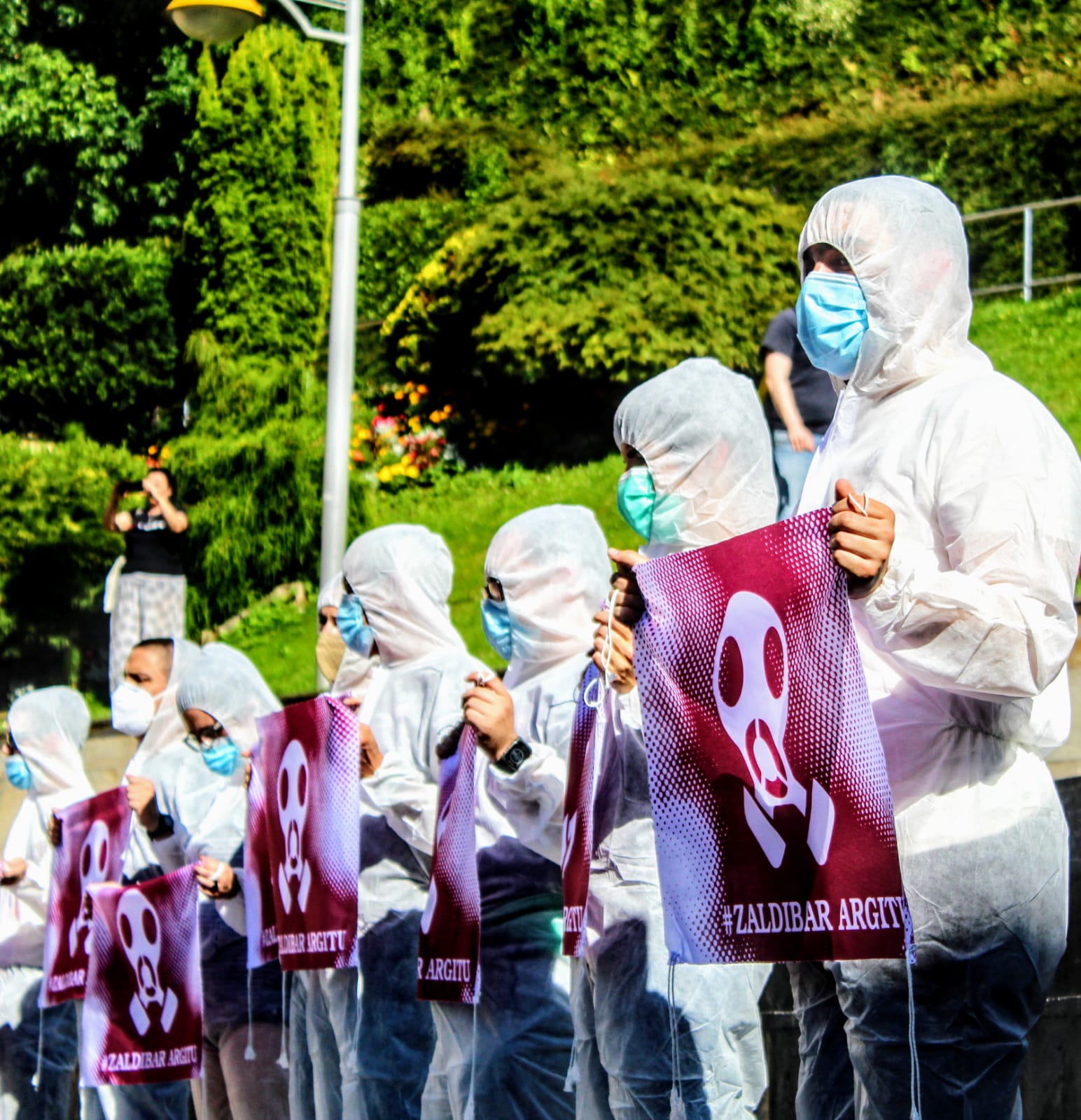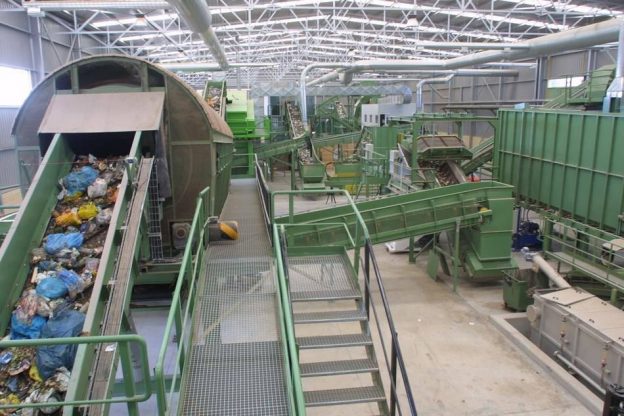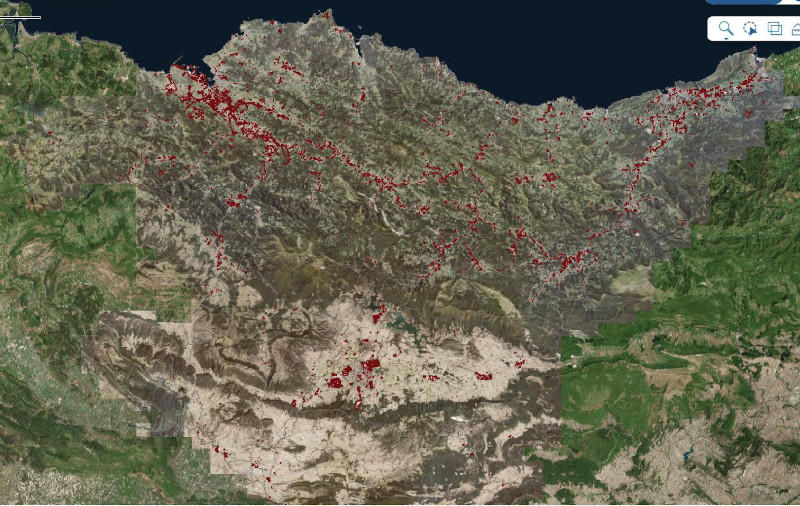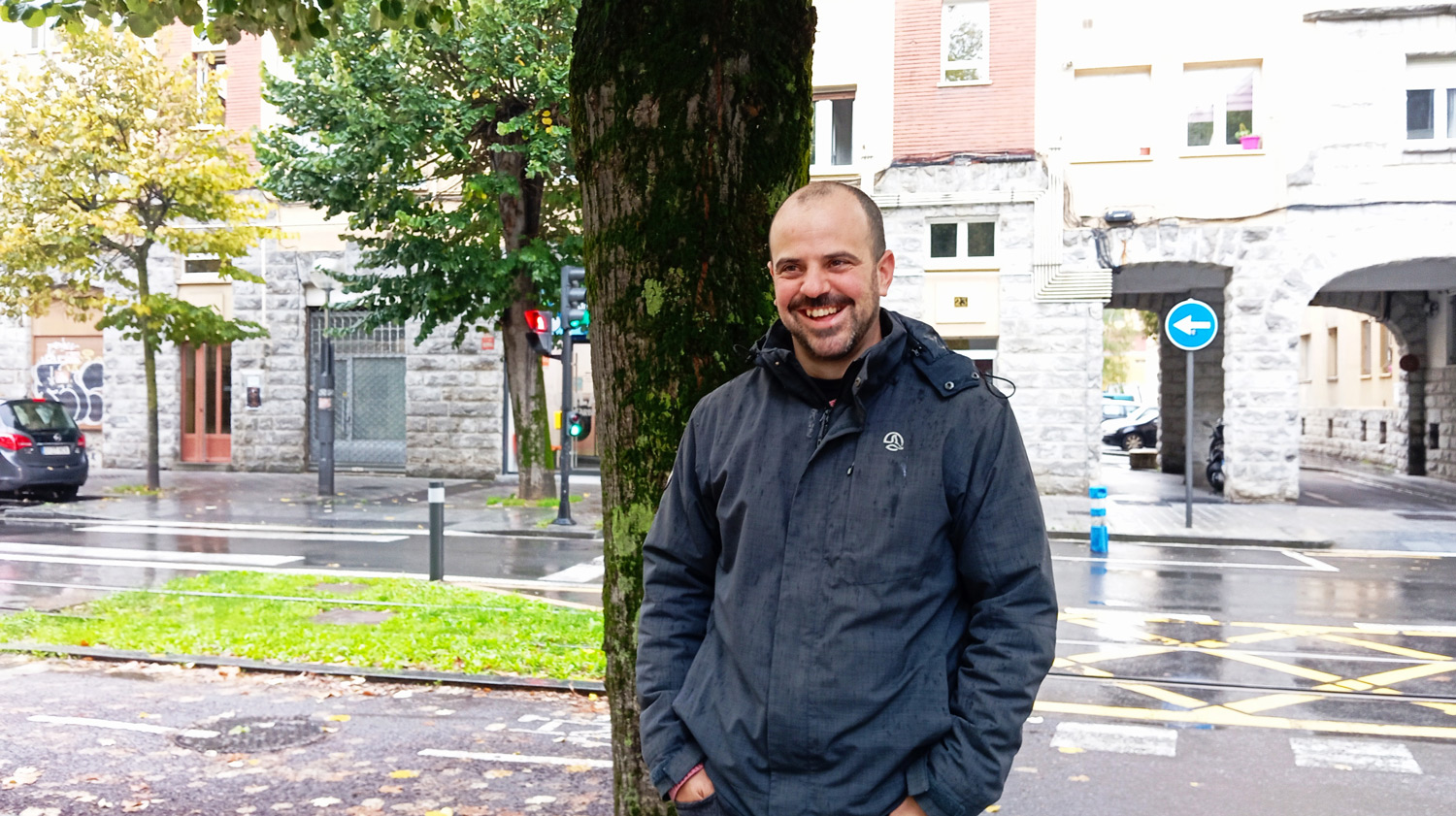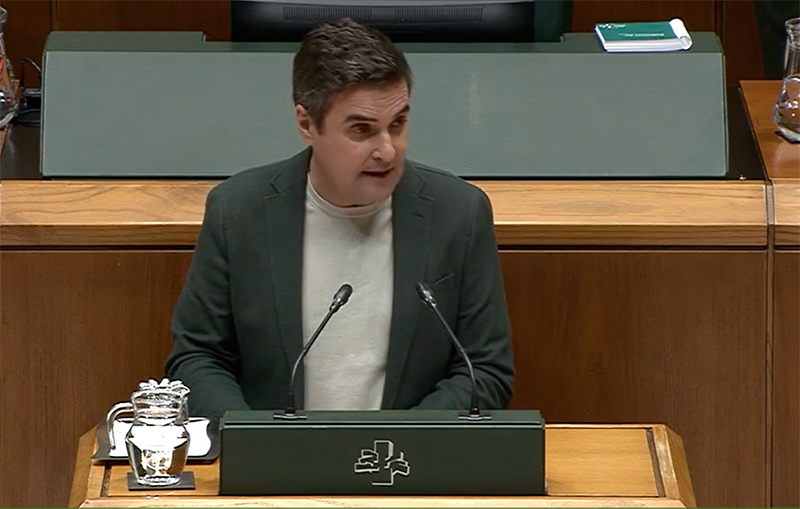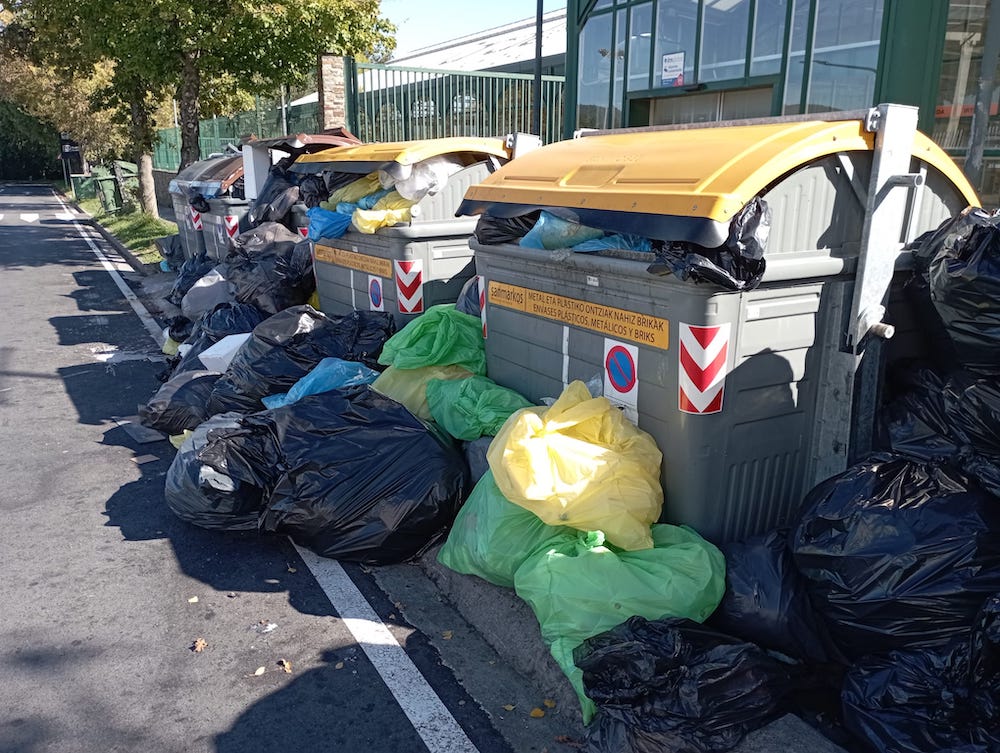Ekologistak Martxan denounces that in the last decade Bizkaia has barely reduced the amount of waste generated
- The Provincial Council of Bizkaia expected the collection of organic matter to reach 4.5% in 2016, but remained at 2.4%. Ekologistak Martxan considers that the sole objective of the management of Bizkaia is for Zabalgarbi to operate at full performance.

The data on urban waste published by the Provincial Council of Bizkaia last April have left a number of decisive conclusions. In total, 648,164 tonnes of waste were collected, an increase of 0.25% compared to 2018. Scientists have been warning for years of the climate and environmental emergency declared by the government this year. However, the amount of waste in Bizkaia has hardly changed in the last decade. There is nothing else to look at towards 2007. This year, the highest figure was recorded, with 662,839 tons.
“Non-generation of waste is the best way to manage it, so any environmental improvement policy should be aimed at reducing consumption and therefore also waste,” Ekologistak Martxan said in response to these figures.
This is not the only worrying fact. Although the separate collection of organic matter has improved, “it was 2.4% deficient, and the Council itself expected to reach 4.5% in 2016,” the members of the group recall. “If the organic component is no longer separated, it will be very difficult to properly treat the other parts. We must promote the separate collection of organic waste, both plant and animal, raw or prepared. Responsible institutions must offer tax and economic benefits to people separating waste before being thrown into containers, as well as encourage the collection of organic matter, through awareness raising and permanent logistic support,” Ekologistak Martxan proposed.
A third of household waste has been incinerated, an increase of 8.7% compared to 2018. With this, Zabalgarbi's capacity was brought to the limit. “The only objective of the management system is for Zabalgarbi to function at full performance, but incinerating does not take advantage of the resources,” said the environmental organization. In addition, 86,732 tons were shipped to landfill. Despite being less than the previous year’s figure, it remains 17.25% of the total, “when it had to be zero”. The group also questions the transparency of the Provincial Council. “There is a lack of data and the existing data is not explained.”
Another reason for disagreement is that construction and demolition waste (RCD) still appears in the separate collection section. According to the European directives, for the calculation of the index they had to have been removed from the statistics, as Álava has already eliminated them. In addition, these are high values: Over 85,000 tonnes, too high compared to the territories of Gipuzkoa and Álava. In 2017, these quantities stood at 10,33 and 23,92 kilograms per inhabitant in Álava and Gipuzkoa respectively, while in Bizkaia they stood at 74,25 kilograms per inhabitant. “Based on these numbers, the Provincial Council of Bizkaia says that it has reached a recycling rate of 50.42%, but if the item of construction and demolition waste is eliminated, the rate remains at 42.38%, that is, it does not reach the target of 50%,” said Ekologistak Martxan.
They also reported that the rejections generated in the waste treatment plants have not yet been accounted for, so they are returned from the flow of remaining fractions to the CMT. “We believe that this misleadingly increases the rate of separate waste collection.”
Bizkaia’s waste management system, says the environmental group, “is absolutely ineffective, as more than half of the waste that can be treated on site is burned or dumped in landfill. This will make it difficult to achieve the targets set by the European Union by 2020.”
The City Hall of Donostia-San Sebastián announced at last Thursday’s plenary session that it will increase the waste rate by 26.5% from January 2025, claiming that Waste Law 7/2022 obliges this. Eguzki, for its part, has denounced that the law only applies in terms of costs,... [+]
August is the holiday month for many people, including those who rule. And yet it is common to take advantage of the month of August to deal with some issues without much noise, albeit of great importance.
This is what is happening with the project to centralize sludge... [+]








